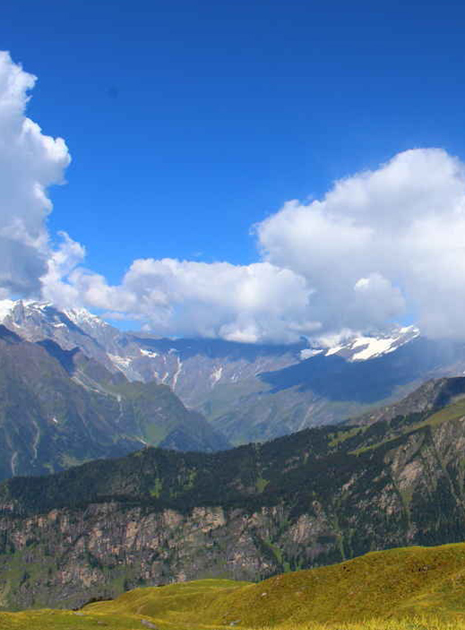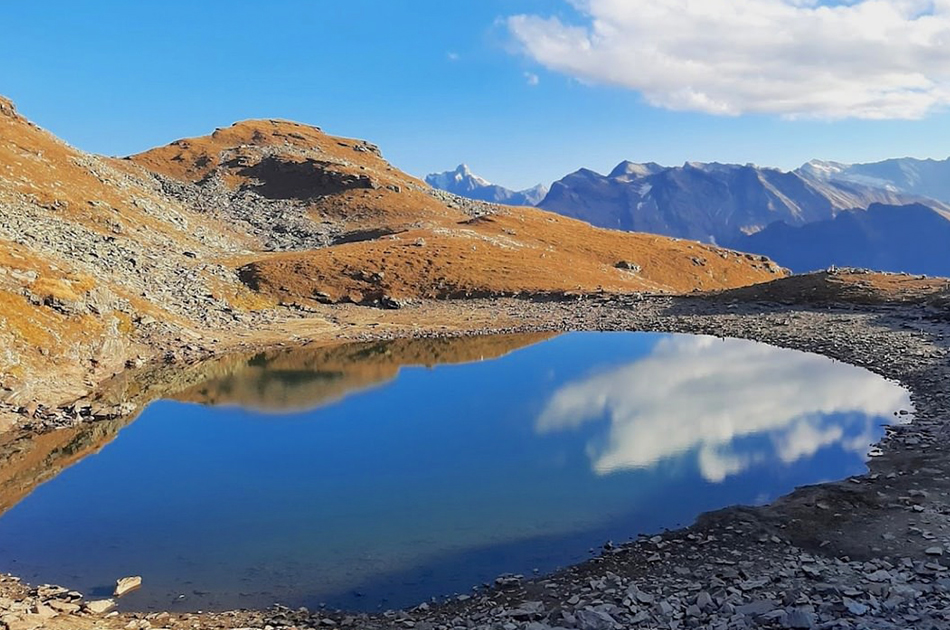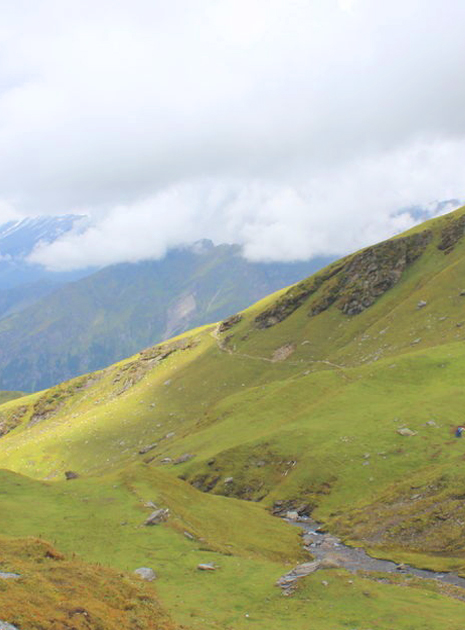Manali, the populous tourist town is the starting point for many treks in Himachal Pradesh like Beas Kund, Bhrigu Lake, and Hampta Pass. Manali main bus terminus is the assembly point where all trekkers are expected to arrive before 9 AM. We will do a quick headcount and start driving towards Gulaba. The drive from Manali to Gulaba is a fascinating journey. The 23 km to Gulaba should take us 2 hours to cover.
As soon as we start from Manali, for the first 20 minutes the roads will take you through the cultural lanes of Himachali tradition. Look out for the old heritage buildings, vibrant attires of the natives, and small flea markets on the corner of the streets. We can pick up some souvenirs at the end of the trip. As we pass through the huge metallic bridges to cross the Beas river, small twinkling stars will pop up and keep us company when the sun rays reflect on the mighty Beas river.
45 minutes into the drive, the Beas River will disappear behind us and we will enter into the famous Rohtang Pass. The road will divert to our right from the Rohtang Pass and enter into the Kullu district. Lush green and golden apple trees will wave their branches to welcome us on both sides of the roads. Once we cover a distance of 15 km, our vehicle will cross through fresh cotton clouds. It will cleanse our mind, body, and soul. During the monsoon season, we can witness the monsoon clouds joining together and making doodles in the sky. Keep your eyes peeled for the valiant hosts of Gulaba – The Vultures. They patrol the sky to keep us in check.
After 21 km, we will cross a government check post. They will take a headcount, check the necessary documents and allow us to go ahead. In 2 more km, we will reach the starting point of the trail – Gulaba.
Gulaba (3,000M) to Rola Kholi (3,810M)
Distance: 7 km
Duration: 6 Hours
The trail for the Bhrigu Lake trek begins from Gulaba. We will cross the road and start walking at around 11 AM. The water source for the day is small mountain streams between every 3 km and the terrain comprises of steep ascents and no descents.
In the beginning, for the first 30 minutes, the trails will be covered with dense oak trees, pine trees, Himalayan Birch, and shrubs. The mystic woods, moist leaves, and the hums of the insects will create a groovy song to keep us entertained. We jump, move and groove with the beat. The pathway will bend and twist like a snake and lead us through some water mist created from the monsoon clouds. (White-outs are a common factor in monsoon treks)
At the end of 2 km, the forest line ends and captivating grasslands take over the landscape. The rolling meadows extend for 5 km till Rola Kholi. Usually, it takes more time and a long distance to reach any Himalayan grassland from the base point of a trek. But on the Bhrigu Lake trek, it just takes 2 km and 30 minutes.
3 kms into the journey, the first water stream appears. We can fill our bottles and settle for lunch there. To make our journey more colourful, the terrain from the lunch point is completely covered with wildflowers. If we get lucky we can find some dry Dandelion flowers. Make a wish and blow it.
The sparkling colours of the flowers on the grassland fluctuate with different shades for the next 2 km. If we stop here and look back, we get a glimpse of the stunning Solang Valley and Beas Kund Valley. Once we cover a distance of 6 km in 5 hours, the pathway gets steeper and ascends towards the high ground. After finishing 7 km in 6 hours we reach a plain land near a big mountain stream. Thais is our Campsite for the day – Rola Kholi. Rola Kholi is a natural podium to stand and observe the stars and star dust in the night and witness the magnificence of Seven Sister Peaks, Deo Tibba, Solang Valley, Hanuman Tibba, and Beas Kund Valley in the day. The spectacles are bound to stay with us forever.





